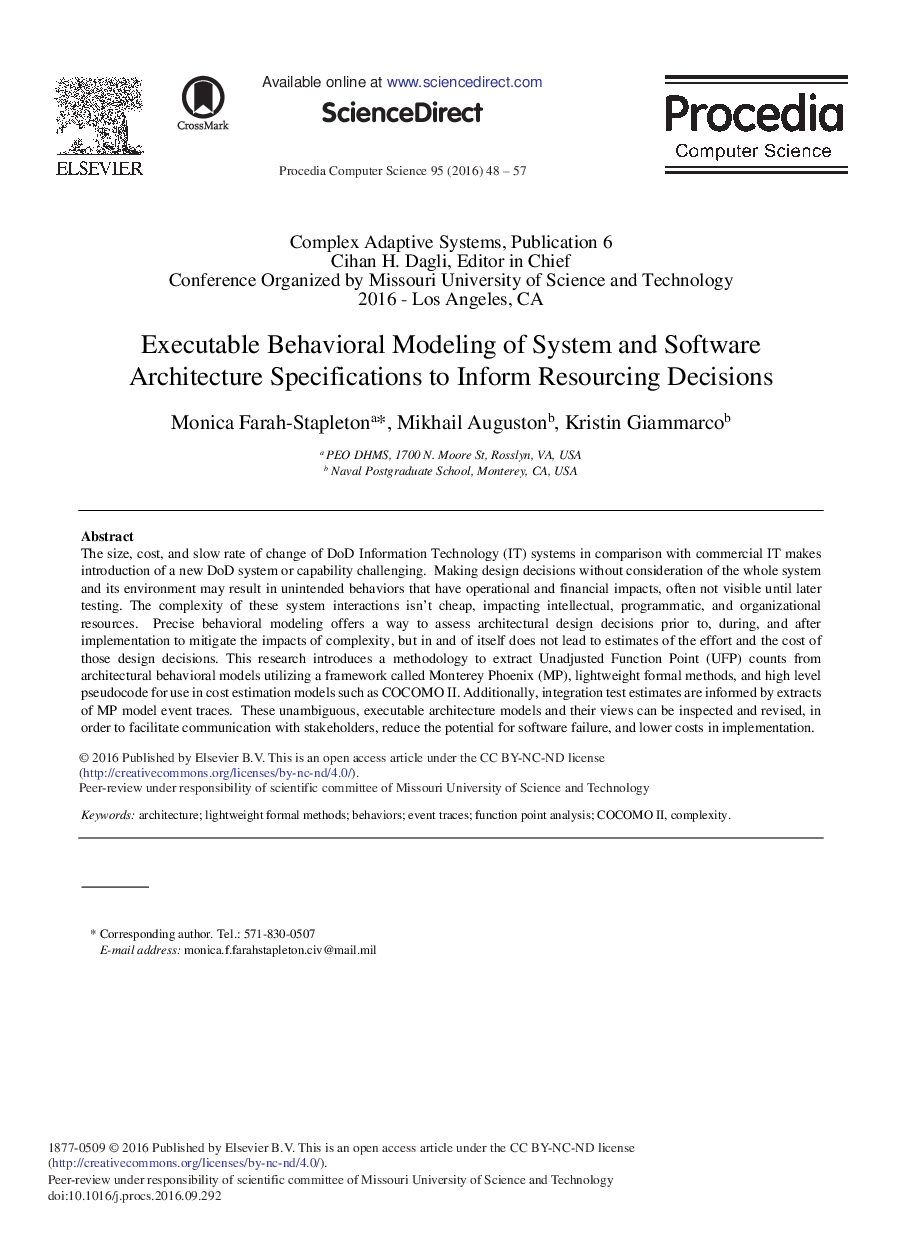| Article ID | Journal | Published Year | Pages | File Type |
|---|---|---|---|---|
| 4961934 | Procedia Computer Science | 2016 | 10 Pages |
The size, cost, and slow rate of change of DoD Information Technology (IT) systems in comparison with commercial IT makes introduction of a new DoD system or capability challenging. Making design decisions without consideration of the whole system and its environment may result in unintended behaviors that have operational and financial impacts, often not visible until later testing. The complexity of these system interactions isn't cheap, impacting intellectual, programmatic, and organizational resources. Precise behavioral modeling offers a way to assess architectural design decisions prior to, during, and after implementation to mitigate the impacts of complexity, but in and of itself does not lead to estimates of the effort and the cost of those design decisions. This research introduces a methodology to extract Unadjusted Function Point (UFP) counts from architectural behavioral models utilizing a framework called Monterey Phoenix (MP), lightweight formal methods, and high level pseudocode for use in cost estimation models such as COCOMO II. Additionally, integration test estimates are informed by extracts of MP model event traces. These unambiguous, executable architecture models and their views can be inspected and revised, in order to facilitate communication with stakeholders, reduce the potential for software failure, and lower costs in implementation.
